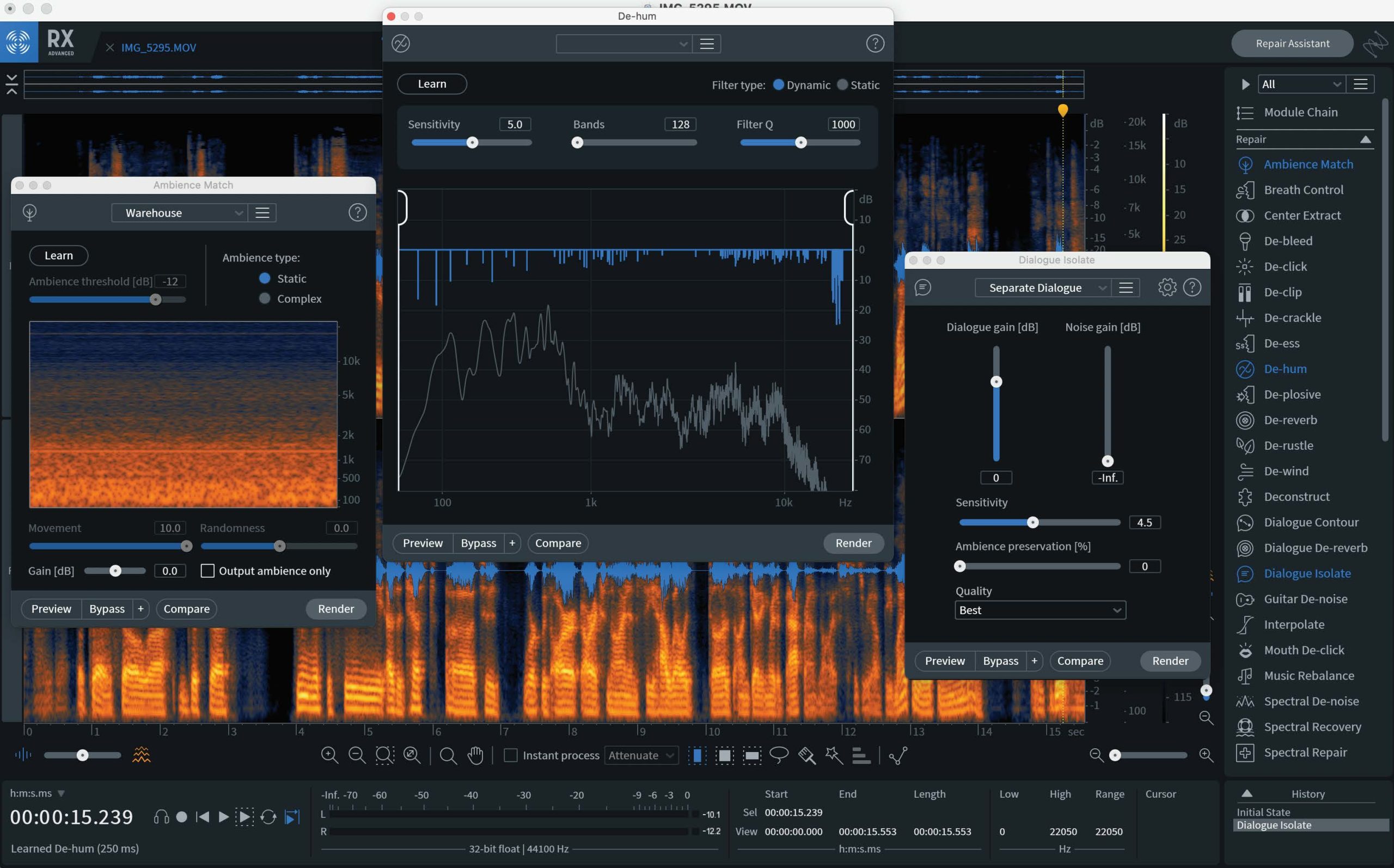

- Izotope rx 6 process selection generator#
- Izotope rx 6 process selection tv#
A higher threshold value may start to suppress low-level components of the voice itself.
Raise the Threshold value to set the point at which the noise reduction engages. Try to set the Reduction value to an amount slightly below where it begins to affect the voice itself. Raise the Reduction value until you hear the noise begin to disappear. Play a few seconds of audio for the plug-in to initialize the noise reduction curve. This is designed to dynamically adjust the individual threshold nodes across the frequency spectrum throughout the program to accommodate any changes in the noise profile. If the noise changes throughout the program: In some cases you may want to insert an EQ plug-in ahead of the Dialogue De-noise plug-in to filter low frequency rumble and make any other broad EQ adjustments. Insert the iZotope RX Dialogue De-noise plug-in on the dialogue track or bus that requires noise reduction. Once you have arrived at the optimal setting for your audio, click Process. Click Preview and adjust settings to the program material, starting with the Reduction slider and then adjusting multiband threshold nodes if necessary. These nodes represent different parts of the frequency spectrum, and their thresholds can be adjusted (and automated) individually. The six Threshold Nodes will automatically set themselves based on the noise profile. Now we’ll Learn a noise profile by selecting a passage of at least one second of pure noise in your audio and clicking Learn. Since this example has steady background noise throughout, we’ll start in Manual mode. Inside the Dialogue tab, we can set the De-noise algorithm to adjust automatically (which is used for sounds that vary throughout the program), or we can manually learn a noise profile that the algorithm can reduce constantly across the program. We’ll use Dialogue mode for this example. The De-noise module has two modes: Dialogue and Spectral. In this example, we also reduced some of the prominent ‘S’ frequencies around 7 kHz and a tonal component of the background noise around 800 Hz. Engage a high-pass filter to remove the most apparent rumble and to make any other static filtering gestures before applying the De-noiser. 

Open the audio file in the RX Audio Editor or send it via RX Connect.Using the standalone audio editor or plug-ins inside your favorite DAW or NLE, RX 9 allows you to surgically fix dialogue and music performances. Instantly remove all hum and interference with dynamic De-hum, rebalance your mix and create stems with Music Rebalance, and clean up unwanted sounds directly in Logic® using the new Spectral Editor built on ARA.
Izotope rx 6 process selection tv#
Used on countless albums, movies, and TV shows to restore damaged, noisy audio to pristine condition, RX 9 is a complete toolkit for audio cleanup and restoration.

Select noise and remove it without having to toggle between Logic and RX.
Clean up unwanted sounds directly in Logic® using the new Spectral Editor, built on the ARA plug-in extension. The expandable History list now shows up to 30 undo steps for quick reference. Need to view more than five steps of undo history? No problem. Roll back an audio selection to any previous step in your History list to get the best combination of audio processing from any point in time with the brand-new Restore Selection feature. Izotope rx 6 process selection generator#
In one pass, eliminate radio and transmitter interference, camera and generator hum, and more. Use the new Dynamic mode in RX 9’s De-Hum to instantly remove any amount of hum, wireless ring, or interference, without artifacts or affecting the audio quality. RX is the award-winning audio repair suite trusted by more top post production engineers than anything else to quickly and reliably deliver great sound.īuilt on decades of iZotope research, RX 9 tackles emerging audio capture and production issues to help you tell clear, impactful stories.








 0 kommentar(er)
0 kommentar(er)
